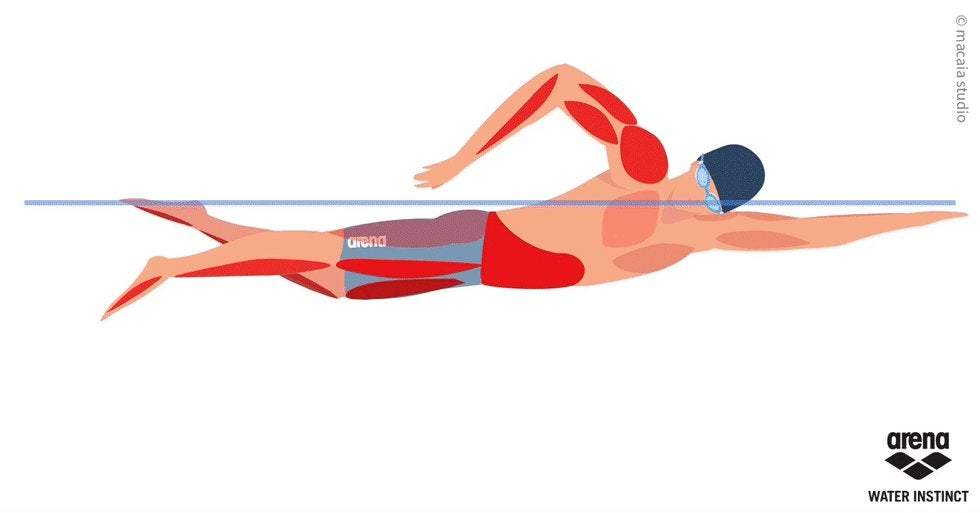The benefits of your children swimming: an analysis
There are countless options that parents have for activities for their children to let off some energy while also benefiting by building healthy fitness levels. From basketball to running or soccer to cycling, there are hundreds of sports that could occupy your child’s interest. Just think about how many sports are included in the Olympics, many of which you probably didn’t know actually were considered sports! But, a great sport to involve your children with is swimming. Here is a list of the benefits of your children swimming.
- Requires a lot of energy
- Cardiopulmonary benefits
- Full body workout
- Low injury potential
Swimming requires lots of energy
Engaging your body in extended cardio workouts is one of the many benefits of swimming. An average child will burn around 400 calories an hour doing easy freestyle and up to 600 calories an hour doing fast freestyle. These calorie counts differ when you start changing up strokes. For instance, butterfly can burn upwards of 1000 calories an hour while easy breaststroke can burn more calories than a fast freestyle.
This is a great benefit of children swimming: they get to deplete their energy in a healthy way. Exercising for just 30 minutes shows to drastically improve health and mood. A workout like swimming will do this too!
Not only that, it helps tire your children out so they fall asleep right away at night!
Cardiopulmonary benefits
Improved oxygen control
Extended cardio also builds lung capacity due to required breath control that is trained while swimming. Developing the ability to push off a wall and travel underwater for a long time is vital for swimmers. But good lungs are more than just how far you can go underwater…they help your body learn to use the oxygen it gets much more efficiently.
It might take a few practices, but your body is resilient and learns pretty quick what it needs to improve to perform at its best. Children who swim on a team begin to learn this from the first day they jump in the water!
Healthy heart development
It’s not just cheerios! Swimming also strengthens the heart because it must work at a high, but safe intensity to keep you moving through the water. Swimmers develop a heart rate that is well below an average person’s and is near that of a runner’s heart. This means the heart can draw in more blood and pump it to the body quickly.
But, swimming causes your heart to get used to beating at a high intensity. So, when it needs to beat faster during the day, it can!
Swimming is a full body workout
Swimming engages your entire body during workouts. Some of the other sports mentioned earlier concentrate either with the legs or the upper body; very few sports require a symbiotic relationship in power between the two. You can’t effectively swim without the use of your arms and you almost can’t go anywhere without a strong, powerful kick (see my article on the importance of a good kick while swimming).
Some of the main muscles trained include:
- Arms
- Triceps
- Biceps
- Shoulders
- Back
- Latissimus dorsi
- Trapezius
- Core
- Abdominals
- Legs
- Glutes
- Quadriceps
- Calves
When a new swimmer decides to pick up swimming, no matter what level of activity they have, swimming requires them to use muscles that they didn’t even know they had because no other exercise can work them like swimming!

Low injury potential for children
Non-contact sport
Unlike basketball or soccer, the possibility of twisting an ankle (or knee) is non-existent and unlike football or lacrosse, it is rare to ever see a swimmer get a concussion. In swimming, if you fall into the pool, the worst you could do is make a big splash!
The most common injures of swimming include sore shoulders, an occasional slip on the deck when you’re not being careful, and a cut or scrape from rubbing against the lane lines during practice. Each of these are cured after a few days of rest and result in no long-term damage.
Easy on joints
Water makes you feel weightless. Because of that, you put very little stress on your joints which means you are less likely to run into knee, hip, and shoulder issues.
Safety from lifeguard
One aspect that is often overlooked is the lifeguard. During each practice, all swimmers are monitored to make sure everyone stays safe. Having a dedicated set of eyes keeps athletes safe when the coaches aren’t around.
In the event something does happen, multiple first aid certified individuals are on the scene ready to take care of the injury.
Do you see the benefits of children swimming?
If these benefits seem desirable for you and your children, then I’d encourage you to give swimming a try. It’s a risk free way to put you on the track for long-term positive health!
Looking to see a cost breakdown for swimming? Check out our post on the costs of swimming.

